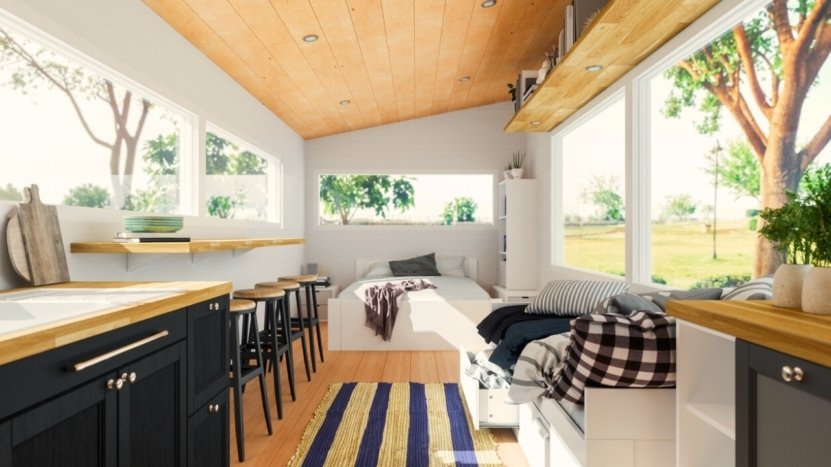Accessory Dwelling Units (ADUs) have gained popularity as a practical solution for accommodating family members, creating rental opportunities, or providing a separate living space. Choosing the right location for your ADU construction by Homeworks Remodeling near Melrose on your property is a crucial step that can significantly impact its functionality, aesthetic appeal, and value. The placement of your ADU should consider various factors such as zoning regulations, site characteristics, privacy, and accessibility. We will explore the key considerations in selecting the ideal location for your ADU, ensuring that it complements your property while meeting your needs.
Understanding Local Zoning Regulations
Before you start envisioning your ADU, it’s essential to familiarize yourself with local zoning regulations. These regulations dictate where you can place an ADU on your property and the size, height, and design limitations. Different municipalities have varying rules, and some may even have specific zones designated for ADUs. First, check with your local planning department or building authority for relevant information regarding setbacks, lot coverage, and height restrictions. This initial research can save you time and resources by ensuring your plans align with legal requirements. Furthermore, understanding these regulations will guide you in selecting a compliant location, minimizing the risk of complications during the permitting process.
Moreover, local regulations might also influence the type of ADU you can build, whether it’s a detached unit, an attached unit, or a garage conversion. Each type comes with its own set of benefits and challenges regarding placement. For instance, a detached ADU may require more space and specific setbacks from property lines. At the same time, an attached unit may need to consider existing structures and their relationship to your main house. By grasping local zoning laws, you can make informed decisions about the ideal location for your ADU while ensuring compliance with all relevant regulations.
Assessing Your Property’s Layout and Topography
The layout and topography of your property are vital factors in determining the best location for your ADU. Each property has unique characteristics, including slopes, trees, and existing structures that can influence placement. Start by conducting a thorough assessment of your lot. Look for flat or gently sloping areas that accommodate your ADU without requiring extensive grading or land alteration. Not only does this approach reduce construction costs, but it also minimizes the potential for drainage issues that may arise from building on steep slopes.
Consider the orientation of your property as well. The direction of sunlight can impact the energy efficiency and comfort of your ADU. Positioning your unit to take advantage of natural light can create a more inviting space, reducing the need for artificial lighting during the day. Additionally, evaluate any existing vegetation and landscaping features. Trees can provide shade and privacy but may also obstruct sunlight. Striking a balance between utilizing natural elements and ensuring proper sunlight and drainage is essential in creating an optimal environment for your ADU.
Furthermore, keep in mind the proximity of your ADU to essential services, such as utilities, sewer lines, and water sources. Easy access to these services can simplify construction and reduce costs. Consider consulting with a land surveyor or a site planner to understand your property’s layout and topography, allowing for a strategic placement of your ADU that maximizes its functionality and aesthetics.
Considering Privacy and Aesthetic Appeal
When choosing a location for your ADU, privacy and aesthetic appeal are critical components that contribute to the overall enjoyment of the space. Ideally, you want to ensure that your ADU offers a degree of seclusion while maintaining harmony with your property’s existing landscape and architecture. Evaluate the sightlines from your main home and neighboring properties to determine how placement can enhance privacy. Utilizing natural barriers such as hedges, fences, or landscaping can provide additional seclusion for your ADU, making it a more comfortable living space for occupants.
Moreover, consider the architectural style of your main home and surrounding structures. A well-placed ADU should complement the overall aesthetic of your property. Think about factors such as rooflines, materials, and color schemes. A cohesive design can enhance curb appeal and increase property value. Additionally, consider any plans for landscaping or outdoor spaces that could impact how the ADU fits into your overall property layout.
It’s also beneficial to think about the experience of the occupants. An ADU in a quiet corner of the yard may offer a more tranquil environment, while one near the main house might foster a sense of connection. Balance these considerations based on the intended use of the ADU, whether it’s for family, guests, or as a rental unit. By thoughtfully addressing privacy and aesthetic appeal, you can create a space that feels integrated into your property while providing the comfort and solitude its occupants desire.
Choosing the right location for your Accessory Dwelling Unit (ADU) requires careful consideration of various factors that influence its functionality, aesthetics, and integration into your property. By understanding local zoning regulations, assessing your property’s layout, and prioritizing privacy, accessibility, and outdoor space, you can make informed decisions that enhance the livability and appeal of your ADU. Thoughtful planning not only maximizes the potential of your new unit but also ensures it aligns harmoniously with your existing environment. Ultimately, the right placement will provide lasting benefits, whether you aim to accommodate family, create rental opportunities, or simply enjoy additional living space.

